Table of Contents
Grinding is an essential part of the brewing process that allows the flavor of coffee beans to be extracted into the water being used to create the main body of your drink.
It is also what releases the delicious scent that we associate with our favorite coffee shops and fresh homemade brews.
The way that coffee is ground can have a significant impact on the taste of the final cup, making the size, quality, and freshness of each grind a serious consideration for coffee connoisseurs and lovers the world over.
Coffee drinkers come in a variety of flavors, much like the coffee they drink, but grinding your own beans at home is the ultimate delight of coffee. You’ll need a burr grinder that fits your budget to fully immerse yourself in this sought coffee culture.
If you grind your own coffee, chances are, you want consistent access to freshly ground beans, as well as more control over the coffee you brew – and this is where a conical burr or flat burr coffee grinder can be particularly useful.
Of course, if you own and use your own burr grinder, you’re going to have to learn how to effectively clean it.
Here’s some further information that will help you to achieve this.
What Is a Burr Grinder?
A burr coffee grinder – sometimes referred to as a burr mill – is one of the most important pieces of equipment in a coffee brewer’s inventory.
It is a tool that grinds a coffee bean between two revolving, abrasive surfaces, resulting in coffee grounds. You can move the abrasive surfaces, or “burrs” closer together or farther apart to gain control over the size of your grounds:
- a wider distance will result in a coarser grind
- closer plates result in a fine grind
The majority of coffee lovers prefer to use a burr grinder over other forms of grinder, as they believe it provides more control over grind size and, ultimately, produces a far better-tasting cup of java.
Quality burr mills are renowned and praised for their consistency, quality, and the overall uniformity of the grinds they produce.
There are two common shapes: a flat and a conical burr.
Flat Burrs vs Conical Burrs
The main difference between flat burrs and conical burrs is their shape.
Conical grinders are shaped like cones with the center point at the top of the cone. A series of teeth create a “crushing” action, grinding the beans into uniform pieces between 1 and 24 microns in size.
Flat burrs are flat disks with sharp teeth on their face. The two disk-shaped plates (one stationary and one rotating) work together to grind beans into extremely uniform particles between 1 and 20 microns in size.
Why Is It Important to Clean Your Burr Grinder?
Of course, grinding coffee beans can be a messy business and it’s important that you deep clean your burr grinder thoroughly and regularly. This will prevent a build-up of old ground coffee and oils released from the beans.
This is important for hygiene reasons, as coffee oils can quickly spoil and pose a risk to your health and wellbeing when consumed.
On top of this, old coffee grounds can lose flavor and spoiled oils taste bad. Leaving these substances in your grinder when creating fresh grounds can ruin the taste of your next batch of java.
How Often Should You Clean Your Burr Grinder?
It’s recommended that you clean your burr grinder at least once every two weeks.
If you are using your grinder daily, or using particularly oily coffee beans, you should increase this frequency to once a week.
This will ensure that your grinder is free of oil and coffee debris, ready to make a fresh brew every time.
How to Clean Your Burr Coffee Grinder
The best way to clean your burr grinder will usually depend on the type of burr grinder you have.
If you purchased your grinder new, chances are it will have a detailed instruction pamphlet or leaflet showing the recommended way to clean the make and model of coffee grinder you have.
The guides below should, however, prove suitable for most electric and manual burr grinders.
Avoid the Dishwasher
An initial piece of advice, regardless of what type of burr grinder you use, is to avoid cleaning it in the dishwasher.
The vast majority of burr grinders are not dishwasher compatible. Seeing as burr grinders also consist of a number of small pieces and screws, dishwashers can use excessive force, which sees these elements disconnect and wash away down the drain.
Always make sure to clean your burr grinder manually.
Cleaning Your Coffee Grinder Using Rice
While you *can* use rice, it is NOT recommended.
The grinder will break down the rice, pushing it through the grinder, where it will soak up any oils and push through any coffee dust and small coffee grounds. However, it’s important to note that many manufacturers now have clauses in their terms and conditions that state doing this will void your warranty.
This is because uncooked rice is harder than most coffee beans, meaning it can break, damage, or wear down your burr grinder quickly. It is also important to note that the starches that rice contains can also clog some non-commercial grinders, causing unintended issues.
Cleaning an Electric Burr Grinder
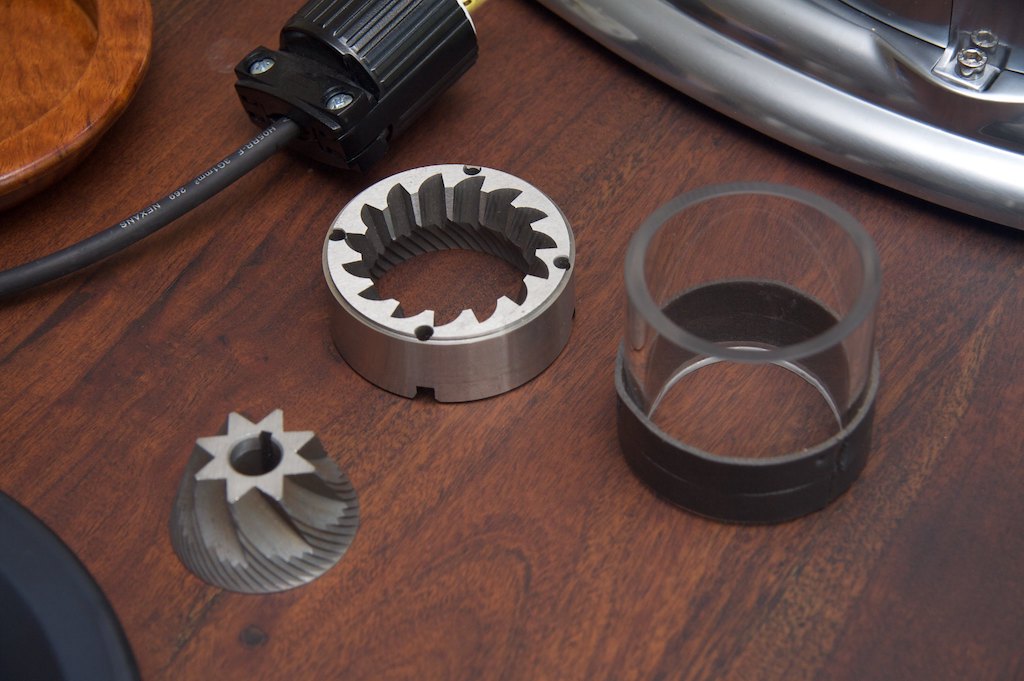
The following steps will help you to clean your electric burr grinder. You should expect the process to take between ten and fifteen minutes in total.
- Step 1: Turn your burr grinder off.
- Step 2: Unplug the grinder from the wall.
- Step 3: Remove the bean hopper and grinding chamber and make sure to wipe these down with a clean coffee filter or specialist lint-free wipe. This will remove oil and coffee dust.
- Step 4: If you find that the coffee oil or dust in your bean container and grind chamber is stubborn, you can clean these components with warm, soapy water and a damp cloth. Fully rinse and leave to air dry.
- Step 5: Remove the outer burr from your grinder and leave the lower burr in place. You should now use a toothbrush, compressed air, or specialist vacuum to clean these two components without getting them wet.
- Step 6: Carefully reassemble your coffee grinder. It should be good to go again!
Cleaning a Manual Burr Grinder
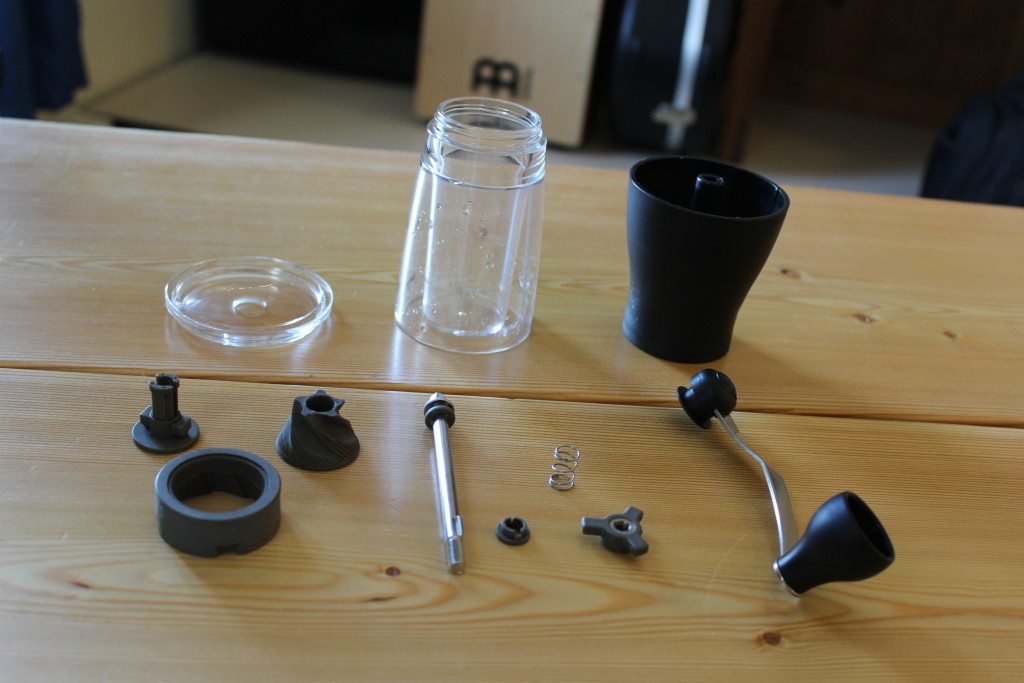
If you have a manual coffee grinder, the cleaning process will be similar but can be a little more complicated in terms of dismantling the grinder in order to access all of the parts that come into contact with the coffee.
- Step 1: Take your grinder apart over a flat, clean surface where you can easily find parts that might roll off in the process.
- Step 2: The dismantling process will generally involve taking apart the handle, hopper lid, and ground catcher. You will then be left with the main shell of the grinder and the burrs. The outer burr should be simple and straightforward to remove.
- Step 3: Unwind the adjustment knob and place this to one side. You will then be able to remove the inner burr, including its centerpiece.
- Step 4: You can finish dismantling the burr grinder by detaching the metal washer, spring, plastic washer, and rod.
- Step 5: Give the handle and hopper a gentle wipe down with warm, soapy water. Leave them to air dry.
- Step 6: You may need to pay more attention to the grounds catcher, which builds up oils over time with repeated use. Clean this with soapy water and a clean brush and allow it to air dry.
- Step 7: Avoid getting the burrs wet. Instead, use a damp Q tip to slowly and gently scrub the burrs’ surface, removing dust, oils and releasing small coffee grounds that may be trapped.
- Step 8: Now it’s time to reassemble your grinder. Reverse the steps you followed to take it apart and make sure you don’t miss any parts in the process.
How Do I Clean My Grinder Without Disassembling?
I get it. Taking apart your coffee/espresso grinder every couple of weeks for a deep cleaning is not ideal. Enter coffee grinder cleaning tablets.
- Removes coffee residue and oils in standalone coffee grinders (not for super-automatic espresso machines)
- Patented, all-natural, food-safe and gluten-free tablet absorbs and loosens coffee grounds
- Effectively cleans grinders without disassembling burrs or casings
Grinder cleaning tablets can make the job of cleaning a burr grinder much easier. The tablets are designed to break down oils and residue from coffee beans, so they’re perfect for this task.
The cleaning tablets are essentially tiny pieces of compressed bread, so they have properties similar to stale bread. If you’ve ever made breadcrumbs by putting some bread in a food processor, you’ve watched the bread turn into crumbs, then powder. The cleaning tablets work the same way. They crumble into tiny particles that get stuck in the spaces between the burrs of your grinder and dislodge any coffee grounds that might be stuck there.
- Step 1: Place the grinding wheel adjustment to its finest setting and grind the tablets through the chamber. Make sure you operate the grinder for at least 30 seconds before stopping since it takes time for the tablets to circulate through the whole chamber.
- Step 2: Remove and discard the ground tablets from the chamber.
- Step 3: Grind a few grams of beans to remove any remaining debris.
- Step 4: Again, remove and discard the ground beans.
- Step 5: Clean the doser with a brush or cloth.
Bottom Line on Deep Cleaning Your Coffee Grinder
As you can see, cleaning your burr grinder forms an essential part of its maintenance and can also help to improve the consistency of the coffee grind and the quality of the ground beans you use in your coffee-based drinks.
Follow the guidelines above to effectively and thoroughly clean your grinder once a week or once every other week (according to your individual usage).

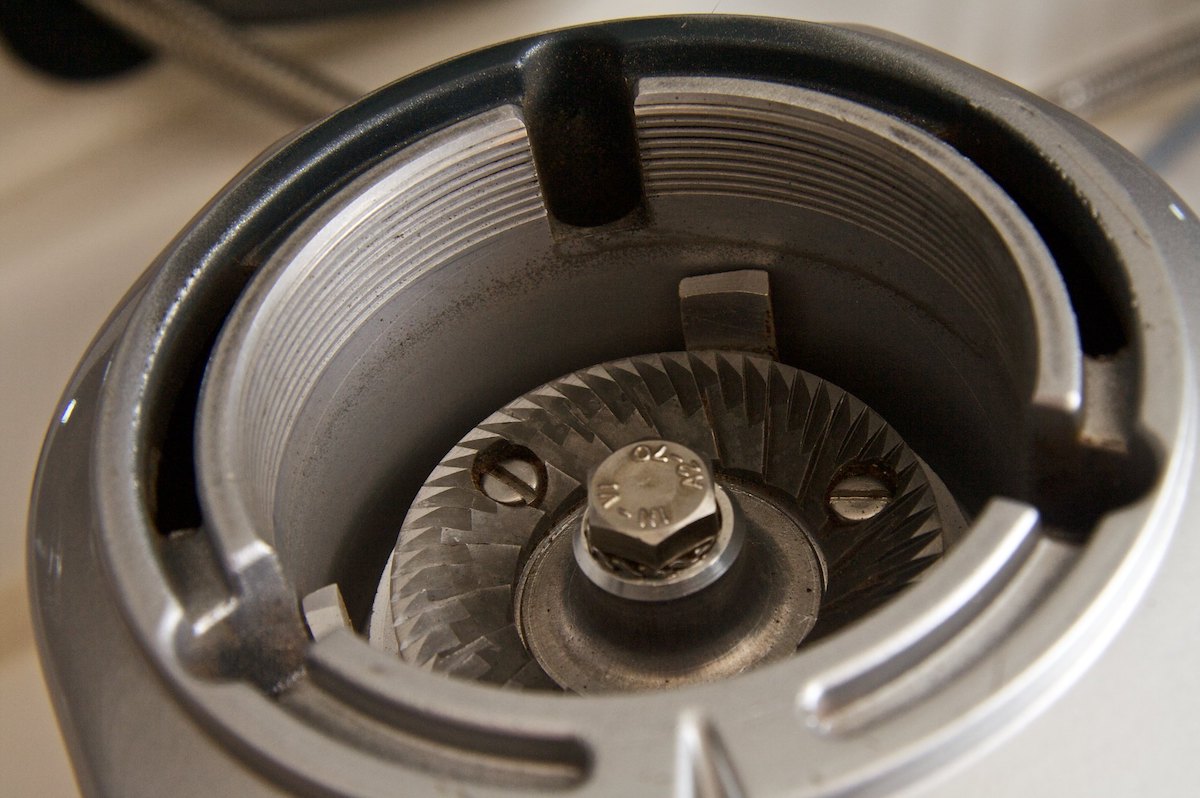



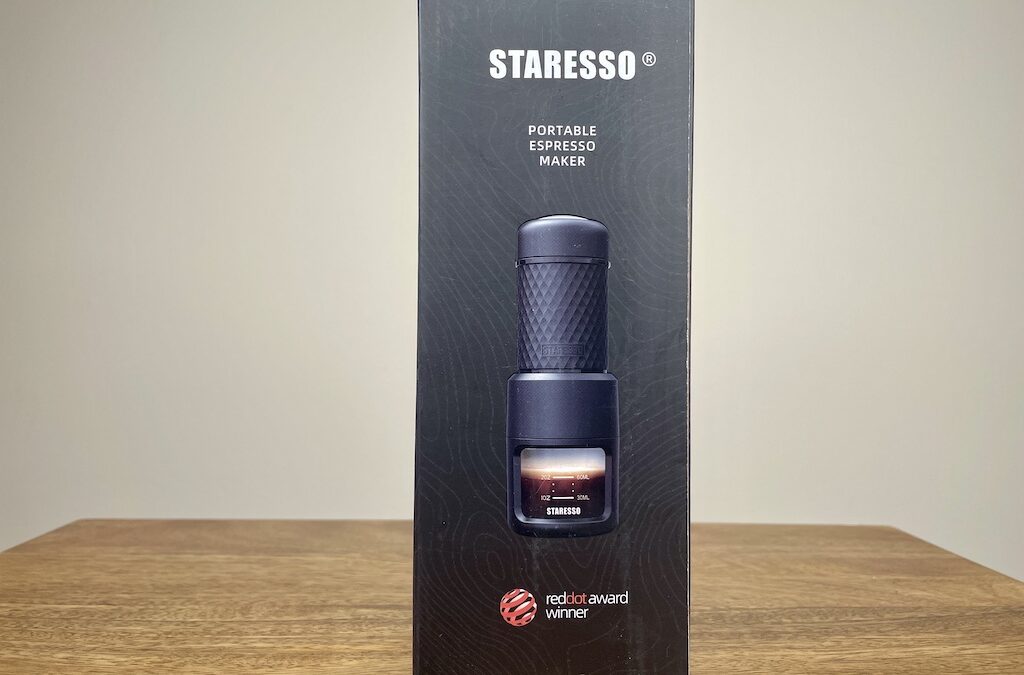
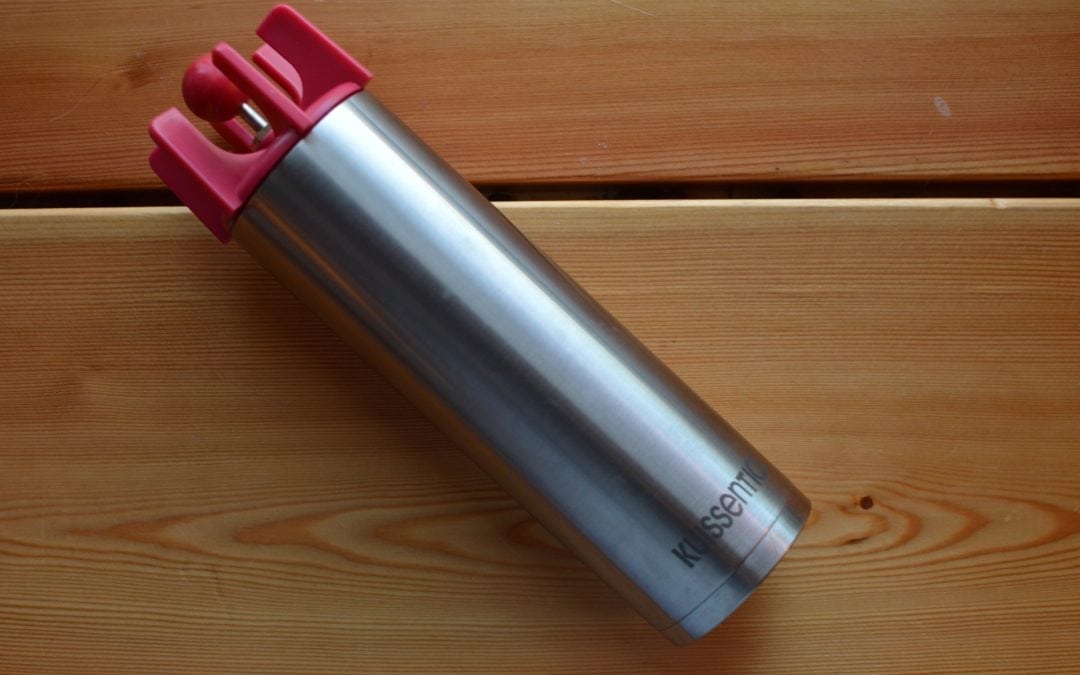


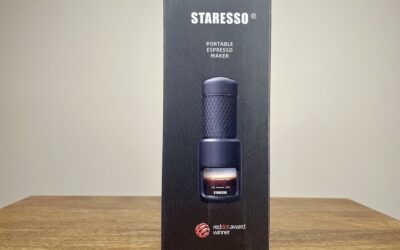

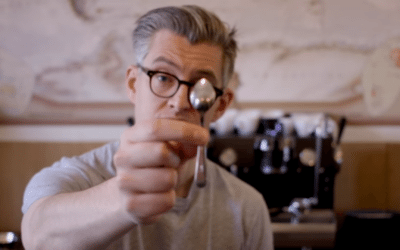
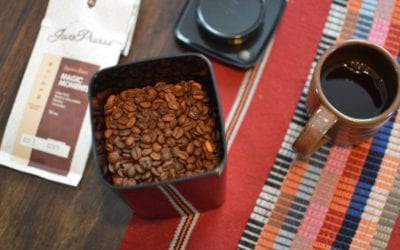

0 Comments